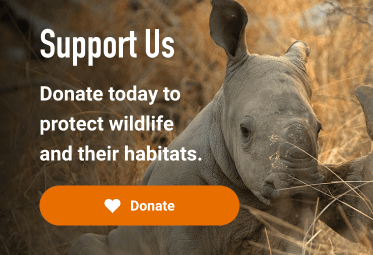Connected Conservation Foundation and the Airbus Foundation partner to help protect endangered species and natural ecosystems
New signed agreement couples high-res satellite imagery with cutting edge AI and on-the-ground conservation technology.
Published 10 July 2021
Airbus Foundation joins with Connected Conservation Foundation and its founding partner NTT Ltd. to announce a new partnership that aims to protect wildlife and natural ecosystems through shared technologies and resources. The five-year agreement sees Airbus’ high-resolution satellite imagery and unmanned aerial vehicles working in collaboration with Connected Conservation Foundation’s on-the-ground digital technologies to help recover and protect populations of threatened species and stop habitat degradation. The experimental roadmap aims to develop novel, AI-powered tools that help Protected Area managers improve: wildlife monitoring; livestock management and overgrazing; as well as the detection of charcoal burning, which leads to deforestation. Helping ensure healthy vegetation that supports wildlife populations, whilst also removing CO2 from our climate.
The United Nations reports that more than one million species are at risk of extinction. To help reverse these trends, the United Nations is working to increase the protected areas from 15% to 30% of the planet by 2030. Technologies are vital in helping conservation managers meet these goals.
“Supporting nature conservation and improved resource management is part of the Airbus Foundation’s ambition. By implementing new technology, the new partnership seeks to lay the foundation for a future roadmap that will utilise the ever-growing portfolio of Airbus tools, including increasing high-resolution satellite imagery, such as the Pléiades Neo constellation that will be delivering 30cm resolution imagery later this year,” said Rachel Schroeder, Managing Director of the Airbus Foundation.
The addition of Airbus technology will multiply Connected Conservation Foundation’s protection of nature to thousands of more square kilometres. By adding insights from satellite technology, it is hoped that on-the-ground field teams can improve conservation management of vast areas to reduce habitat loss and degradation, reduce poaching and prevent human-wildlife conflict. The technology holds great potential to help inform decision-making and validate conservation strategies.
“To keep endangered species populations healthy and safe, conservation management teams need to monitor and predict the movement of animals across landscapes. High-quality monitoring data is needed to enhance their understanding of species distribution and threats over time. Airbus products and services provide expanded aerial visibility and great potential for improved safeguarding of species numbers and their habitats,” said Sophie Maxwell from Connected Conservation Foundation.
The first project for the partnership will focus on novel approaches using Artificial Intelligence to search high-resolution imagery, pixel by pixel, to detect large animals in Madikwe Game Reserve in South Africa and Northern Rangelands Trust conservancies in Northern Kenya.
Microsoft AI for Earth programme are co-investor in this first pilot project.
Working with Microsoft Azure Cloud, NTT Ltd.’s data engineering team will explore the use of AI Analytics to count species and design a secure pipeline to deliver this intelligence to conservation managers in the field. The team look to build on existing work, including research from WILDCRU at Oxford University and openly share outcomes with the conservation community. Exciting research shows that this approach could vastly improve species monitoring, particularly in hard-to-reach areas on country borders with security concerns. By working closely with our field partners and Connected Conservation Foundation technology testing facilities, we can quickly trial and implement partners’ solutions for conservation use cases. We evaluate the feasibility of combined technology to deliver an immediate impact on the ground in Kenya and South Africa.
Sustainability lead at NTT Ltd., Matthew Robinson, states that “we’re looking forward to seeing the potential of what the satellite imagery will bring to not only the wildlife tracking and conservation world but also for environmental tracking, including habitat degradation, charcoal burning and overgrazing. This relationship between Airbus Foundation, Connected Conservation Foundation and NTT Ltd. will also support us in achieving our own Sustainability Impact Ambitions, especially how we as a business, through our people and technology solutions, can help restore and regenerate ecosystems."


